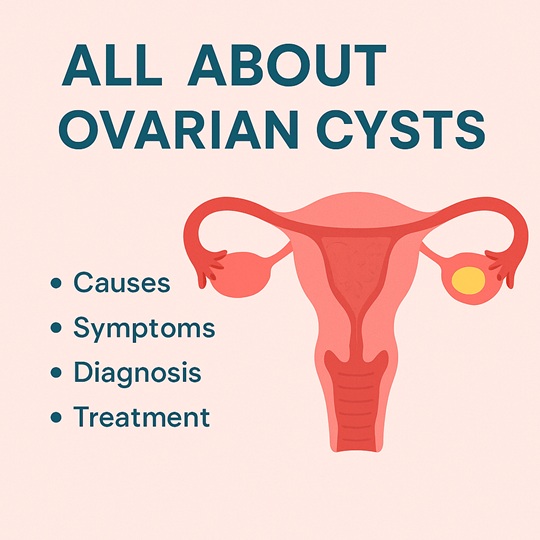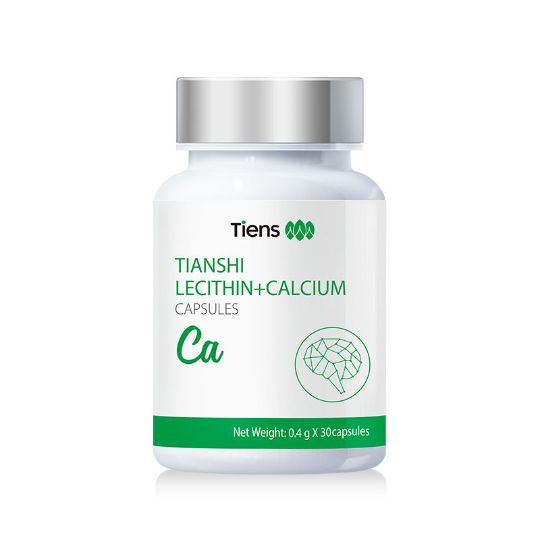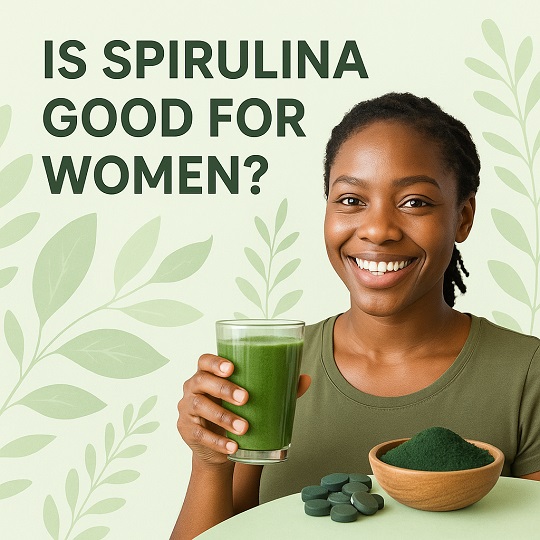
All About Ovarian Cysts: Causes, Symptoms, Diagnosis, and Treatment
All about ovarian cysts. Ovarian cysts are fluid-filled sacs that develop on or inside a woman’s ovaries. While they are common and usually harmless, they can sometimes lead to complications or signal underlying health issues. This comprehensive guide will help you understand everything about Cysts of ovaries — including their types, symptoms, causes, diagnosis, treatment options, and preventive tips.
What Are Ovarian Cysts?
Cysts of ovaries are small sacs filled with fluid that form in or on the ovaries, the reproductive glands located on each side of a woman’s uterus. Most women will develop at least one cyst during their lifetime. In many cases, they are benign (non-cancerous) and resolve on their own without treatment.
Types of Ovarian Cysts
There are several types of Cysts of ovaries, which can be broadly categorized into functional and pathological cysts:
1. Functional Cysts
Functional cysts are the most common type and are usually harmless. They form as a part of the menstrual cycle.
- Follicular Cysts: These develop when the follicle (the sac that holds the egg) doesn’t release the egg and continues to grow.
- Corpus Luteum Cysts: These occur after the egg is released, and the follicle transforms into the corpus luteum, which may fill with fluid.
2. Pathological Cysts
These are less common and may require medical intervention.
- Dermoid Cysts (Teratomas): Contain tissue such as hair, skin, or teeth because they form from embryonic cells.
- Cystadenomas: Filled with watery or mucous material and can grow quite large.
- Endometriomas: Caused by endometriosis, these cysts are filled with old blood.
Some ovarian cysts can also become hemorrhagic (filled with blood) or ruptured, leading to severe pain and internal bleeding.
Causes of Ovarian Cysts
Cysts of ovaries can develop for a variety of reasons, including:
- Hormonal imbalances
- Pregnancy
- Endometriosis
- Pelvic infections
- Polycystic Ovary Syndrome (PCOS)
- Certain medications, such as fertility drugs
Symptoms of Ovarian Cysts
Most Cysts of ovaries are asymptomatic and may only be discovered during a routine pelvic exam or ultrasound. However, when symptoms do occur, they can include:
- Pelvic pain or pressure
- Bloating or abdominal swelling
- Painful menstrual periods
- Pain during intercourse
- Frequent urination
- Difficulty emptying the bladder
- Nausea or vomiting
- Irregular menstrual cycles
If a cyst ruptures or causes ovarian torsion (twisting of the ovary), it can lead to severe and sudden pelvic pain, which requires immediate medical attention.
How Are Ovarian Cysts Diagnosed?
Diagnosis typically begins with a physical and pelvic examination. If a cyst is suspected, your healthcare provider may recommend the following:
1. Ultrasound
A pelvic ultrasound (transvaginal or abdominal) uses sound waves to create images of your ovaries and detect the size, shape, and contents of the cyst.
2. Blood Tests
Tests such as CA-125 may be performed if the cyst appears suspicious or if there is a risk of ovarian cancer. This is more commonly recommended for postmenopausal women.
3. Pregnancy Test
To rule out pregnancy-related cysts or complications.
4. Laparoscopy
In some cases, a minimally invasive procedure called laparoscopy may be used to directly view and possibly remove the cyst.
Treatment Options
Treatment depends on the type, size, symptoms, and age of the patient. The main approaches include:
1. Watchful Waiting
For functional cysts that are small and not causing symptoms, doctors may recommend monitoring the cyst with periodic ultrasounds to see if it resolves on its own.
2. Medications
Hormonal contraceptives such as birth control pills may be prescribed to prevent the formation of new cysts.
3. Surgery
If a cyst is large, persistent, or causing severe symptoms, surgery may be required. The types of surgery include:
- Cystectomy: Removal of the cyst while leaving the ovary intact.
- Oophorectomy: Removal of the affected ovary.
- Laparoscopy: A minimally invasive procedure.
- Laparotomy: An open surgery used for large or potentially cancerous cysts.
Complications
While most cysts are harmless, potential complications can include:
- Ovarian torsion: Twisting of the ovary, cutting off blood supply.
- Ruptured cyst: Can lead to internal bleeding and infection.
- Infertility: Particularly if related to endometriosis or PCOS.
- Cancer: Although rare, especially in postmenopausal women.
Can Cysts Be Prevented?
While it’s not always possible to prevent cysts, there are steps you can take to lower your risk:
- Regular pelvic exams to monitor changes in your ovaries
- Maintaining a healthy weight
- Managing hormonal imbalances
- Treating underlying conditions such as PCOS or endometriosis
- Using hormonal birth control if recommended by your doctor
When to See a Doctor
You should seek medical attention if you experience:
- Sudden, severe abdominal or pelvic pain
- Pain accompanied by fever or vomiting
- Dizziness or fainting
- Rapid breathing
These symptoms could indicate a ruptured cyst or ovarian torsion and require emergency care.
Living with Ovarian Cysts
Most cysts are manageable and resolve naturally. For women with chronic cysts or PCOS, ongoing medical care and lifestyle adjustments may be necessary. Eating a balanced diet, exercising regularly, managing stress, and keeping up with medical appointments can greatly improve quality of life.
Conclusion
Cysts of ovaries are a common part of many women’s reproductive lives. While most are harmless and go away on their own, it’s important to recognize the symptoms and seek medical advice when needed. With early detection and proper treatment, complications can be minimized. Regular checkups and awareness are key to managing your reproductive health.
References
- American College of Obstetricians and Gynecologists (ACOG).
Ovarian Cysts.
https://www.acog.org/womens-health/faqs/ovarian-cysts - Mayo Clinic.
Ovarian Cysts – Symptoms and Causes.
https://www.mayoclinic.org/diseases-conditions/ovarian-cysts/symptoms-causes - Cleveland Clinic.
Ovarian Cysts: Types, Symptoms, Treatment & Prevention.
https://my.clevelandclinic.org/health/diseases/9131-ovarian-cysts - MedlinePlus – U.S. National Library of Medicine.
Ovarian Cysts.
https://medlineplus.gov/ovariancysts.html - Office on Women’s Health (OASH), U.S. Department of Health & Human Services.
Ovarian Cysts.
https://www.womenshealth.gov/a-z-topics/ovarian-cysts - Johns Hopkins Medicine.
Ovarian Cysts: What You Need to Know.
https://www.hopkinsmedicine.org/health/conditions-and-diseases/ovarian-cysts - National Health Service (NHS), UK.
Ovarian Cyst.
https://www.nhs.uk/conditions/ovarian-cyst/ - UpToDate – Clinical Decision Support.
Evaluation and Management of Adnexal Masses.
https://www.uptodate.com (subscription required) - National Institute of Child Health and Human Development (NICHD).
What are the symptoms of ovarian cysts?
https://www.nichd.nih.gov/health/topics/ovarian/conditioninfo/symptoms - PubMed Central (PMC) – National Center for Biotechnology Information (NCBI).
Ovarian Cyst: A Review.
https://www.ncbi.nlm.nih.gov/pmc/articles/PMC6449801/




